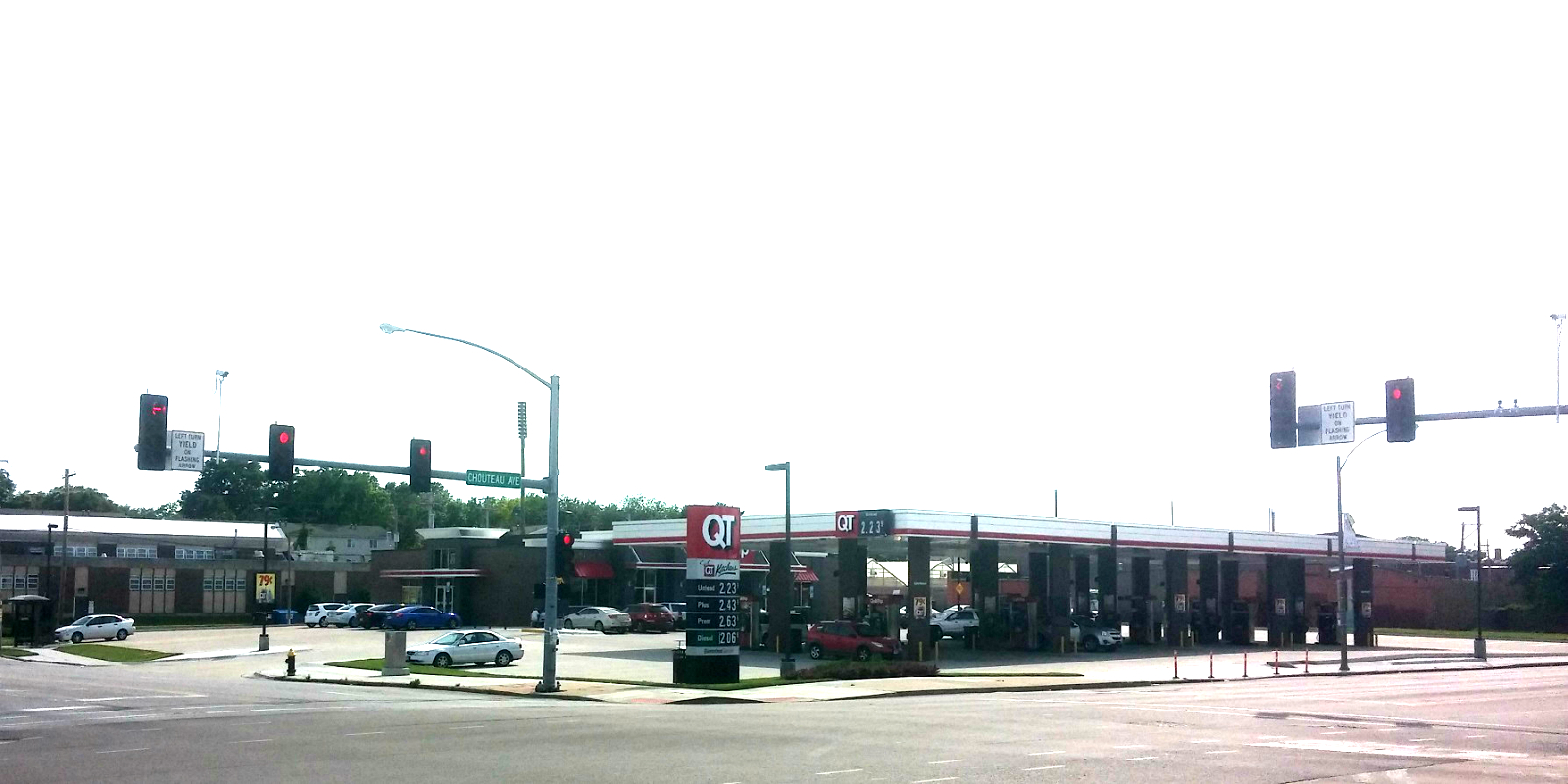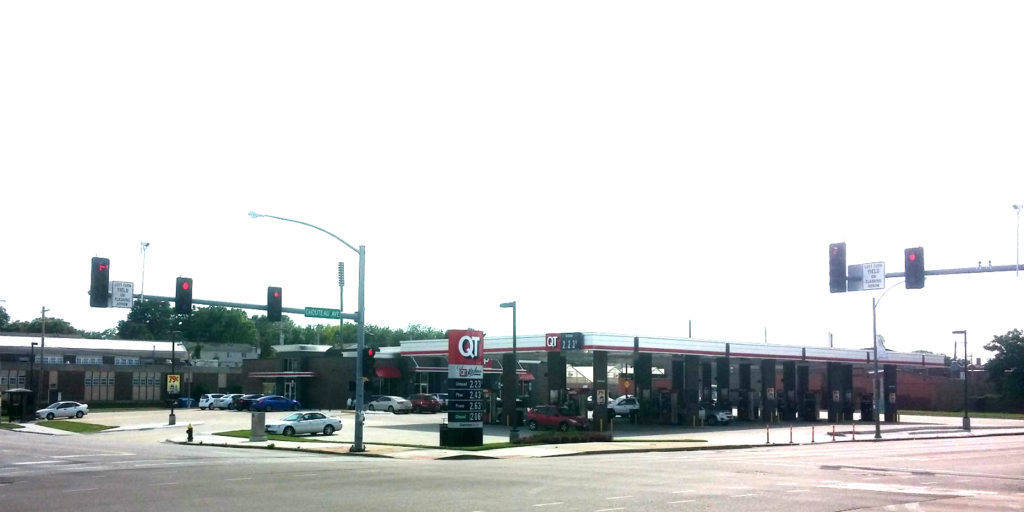A proposed QuikTrip gas station and convenience store at Jefferson and Chouteau sparked controversy last year. Pushback from many and a petition championed by No Suburbs in the City failed to save the traditional buildings that occupied two parcels along Chouteau at Jefferson. Here at nextSTL I did the math to evaluate the potential productivity of the project.
The city has been turning Chouteau and Jefferson into stroads, that is accommodating large volumes of vehicles at high speeds, yet also maintaining access to adjacent active land uses. The buildings’ affect on sight lines for drivers at the corner was cited as a reason for demolition. Stroads encourage auto-oriented land uses along them. That comes with lower yields compared to traditional development patterns, yet are served by more infrastructure. A widening gap between the economic activity along a stroad and the cost to maintain it is a recipe for insolvency.
For a city unable to add land and striving to enhance services and infrastructure, increasing land productivity should be a priority. Let’s see how we did in this transaction. Let’s do the math!
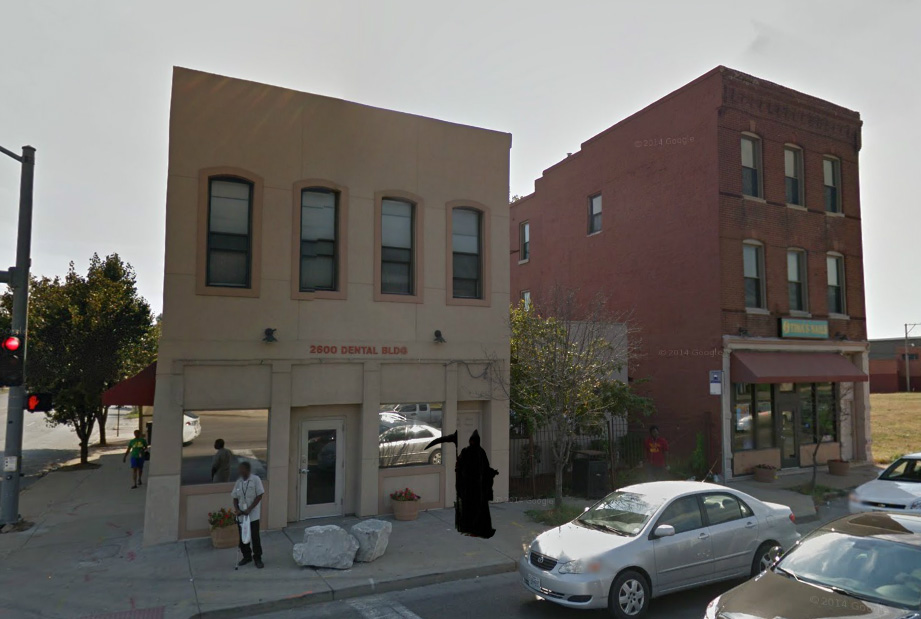
Before
Assessed land: $42,480
Assessed improvements: $93,360
Assessed total: $135,840
Land Area: 1.62 acres
Assessed improvements/acre: $57,514
Assessed total/acre: $83,683
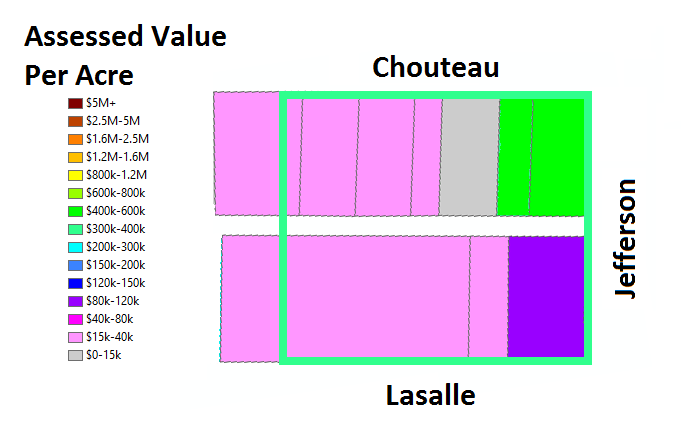 {The box is the QT parcel}
{The box is the QT parcel}
After
Assessed land: $54,600
Assessed improvements: $396,800
Assessed total: $451,400
Land Area: 1.483 acres
Assessed improvements/acre: $267,565
Assessed total/acre: $304,383
Overall it looks like a win. But most of the site was empty land. The productivity of the two parcels with buildings on them was $468,705 in assessed value per acre, 54% higher than the gas station. The old and obsolete built in 1879 and 1888 beat the shiny and new.
Until 2011, four additional buildings remained facing Chouteau. In various states of use and repair, the structures had value and the potential for reuse. The four buildings in a blighted state had an assessed value per acre of $202k in 2010. Their demolition set in motion the now auto-centric development. With all six buildings standing and occupied, the old and obsolete would far out produce the shiny and new. If the city had a development plan focused on economic productivity, the result at this historically urban corner could have been different.
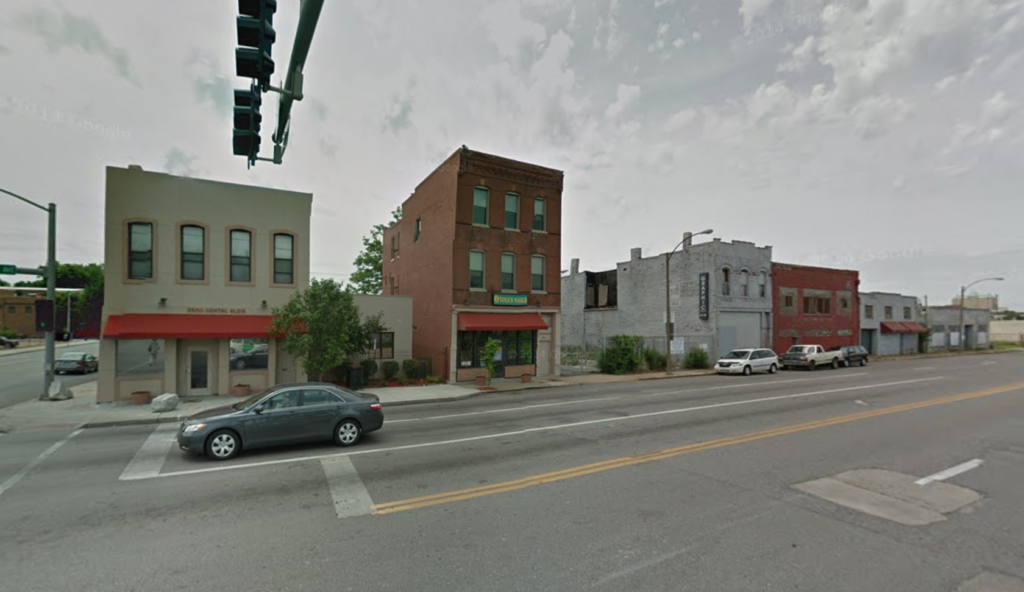 {By making little bets on these buildings, the ROI of cultivating them would likely have been higher than wagering on a single use. }
{By making little bets on these buildings, the ROI of cultivating them would likely have been higher than wagering on a single use. }
Of course assessed value isn’t a complete picture given sales, earnings, utility, etc taxes. But are the $3M in predicted sales at the QT mostly new or mostly cannibalized from elsewhere?
The before state of the property provided opportunity to build incrementally. Building on smaller pieces of land reduces risk because there would be more owners and variance and flexibility of uses. More smaller pieces afford more opportunity for local ownership, which comes with more wealth staying local. A strategy of cultivation would lead to a more resilient outcome. Buildings could be enhanced, added to, and replaced, or fail at different times, but taken together smooth out the ups and downs.
Conversely the single use means the swings of its use are felt over the whole area, and if it fails, it fails all at once. Ways to enhance the property are few; it was built in a finished state. In this case the ownership is out of town and worse since it sells gas almost all of the wealth spent on it leaves the region.
After 127 and 136 years those two buildings were still productive. How well will the gas station be doing after that long?
This post is inspired by the Strong Towns tale of the Taco John’s. Have a read
The Cost of Auto Orientation
The Lost Opportunity of Auto Orientation
The Cost of Auto Orientation, Update
